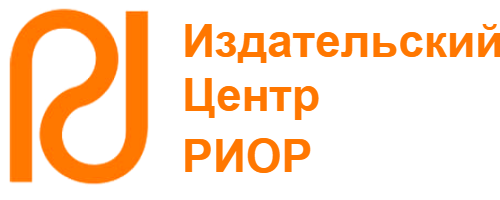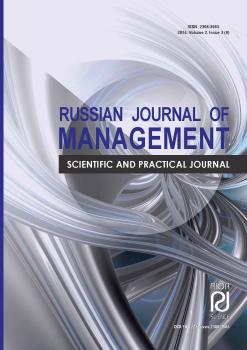Саранск, Республика Мордовия, Россия
ГРНТИ 06.54 Производительные силы и научно-технический прогресс
ГРНТИ 06.73 Финансовая наука. Денежные и налоговые теории. Кредитно-финансовые институты
ГРНТИ 06.75 Экономические проблемы организации и управления хозяйством страны
ГРНТИ 06.81 Экономика и организация предприятия. Управление предприятием
ОКСО 38.02.06 Финансы
ОКСО 38.03.01 Экономика
ОКСО 38.03.02 Менеджмент
ОКСО 38.04.01 Экономика
ОКСО 38.04.02 Менеджмент
ОКСО 38.04.08 Финансы и кредит
ББК 65 Экономика. Экономические науки
ББК 6505 Управление экономикой. Экономическая статистика. Учет. Экономический анализ
ББК 652 Специальные и отраслевые экономики. Экономика межотраслевых комплексов
ББК 6523 Планирование. Экономическое прогнозирование
ББК 6526 Финансы. Денежное обращение
ББК 6529 Экономика предприятия (фирмы)
ББК 653 Специальные и отраслевые экономики. Экономика межотраслевых комплексов
ББК 6530 Экономика промышленности
BISAC BUS000000 General
BISAC BUS001000 Accounting / General
BISAC BUS001010 Accounting / Financial
BISAC BUS017000 Corporate Finance / General
BISAC BUS017010 Corporate Finance / Private Equity
BISAC BUS017020 Corporate Finance / Valuation
BISAC BUS020000 Development / Business Development
BISAC BUS090000 E-Commerce / General (see also COMPUTERS / Electronic Commerce)
BISAC BUS044000 Economics / Microeconomics
BISAC BUS069030 Economics / Theory
BISAC BUS082000 Industrial Management
BISAC BUS070000 Industries / General
BISAC BUS041000 Management
BISAC BUS101000 Project Management
В современном экономическом укладе лидерство принадлежит компаниям, активно внедряющим новшества. Тем более это актуально для построения инновационного уклада российской экономики. Именно инновационная продукция обеспечивает бизнесу лидирующие позиции на рынке и наибольшую долю добавленной стоимости в среднесрочной и долгосрочной перспективах. В последующем такой акцент позволяет добиться роста стоимости бизнеса на основе формирования уникальных конкурентоспособных преимуществ и капитализации нематериальных активов (брэнды, гудвилл и т.п.)
инновации, ниокр, стратегия, исследования, издержки, затраты, бизнес, тнк, крупный бизнес, компания
Feature of business functioning in the context of globalization and integration is the systematic identification of priorities for the strategic development of economic entities. Today, the economic space is represented both by an effectively functioning segment of the traditional way of life, and by the rapid development of high-tech segments of the "new" economy, which determine the strategic orientation of business leaders in the division of labor. Therefore, it is only taking into account the features of the modern development of the flagships of the economy that it is necessary to determine the growth segments of companies ' competitiveness. The criterion for effective integration of structures is often the maximization of the cost of economic entities involved in the reproduction process, as well as increasing the level of technological equipment and business growth.
In developed countries, the share of the "new economy" reaches 30 % of the specific weight. It is characterized by high rates of growth and concentration based on the production of high–tech products, network structures of the organization, high-tech computer and information support. The determining factor here is the high level of research and development costs (R & d), which is possible due to high so-called quasi-permanent costs. It should be emphasized that if the traditional way of economy is characterized by a large share of variable costs, the situation is different here. Microelectronics and telecommunications are the material infrastructure that the new economy relies on. Promising sectors are "untwisted" to the limit, when it becomes possible to Finance the development and replication of products that determine scientific and technical progress (STP). The branches of the "new economy" are characterized by: 1) intellectual capital as the main resource for development; 2) the uniqueness and predominant significance of intangible assets; 3) a high share of innovation and updating of products. For example, if in the last quarter of the twentieth century, the book value of financial and physical assets averaged 90% of the market value, then by the beginning of the twenty – first century-20 %. The rest was accounted for by intangible assets, intellectual capital-knowledge, brands, research and development results, intellectual property, reputation, relationships with employees, customers, suppliers and business partners. But what is the secret of such rapid success? Sort out.
One of the most important is the answer to the question about the advantages of a large form of business organization. The concentration of capital and production subsequently determines a number of strategic advantages of the economic system, namely:
1) the effect of the law of economy on the scale of production, i.e. by reducing the value of fixed costs per unit of output, it becomes cheaper;
2) the law of unique competitive advantages of a large system of financial resources. A large system of financial resources, a large value formation has unique development opportunities and, as a result, benefits. A large-scale value education can afford: a) financing the most capital-intensive and profitable projects; b) the ability to get virtually unlimited resources in the financial market (first at the regional, then at the national, global), or the most profitable way to place their own funds; C) the ability to use established schemes of financial entrepreneurship, but on a larger scale, often using the most modern achievements of management practice. The unique competitive advantages of a large system of financial resources make it possible not only to provide favorable financing conditions, but also to win the competition by operating at the threshold value of the cost of available resources.
3) the effect of the law of
In any case, when developing a promising product, the company makes unique large one-time investments in R & d. In the future, the amount of resources spent determines the leading position of the developer in the market and the vector of development of STP. Thus, the industries of specialization of the world's leading largest companies that provide the highest research costs were automotive, electronics, pharmaceuticals, and high technology. In addition, the mutually beneficial interest of economic entities and their desire to expand the segment of monopoly influence on the market lead to the cooperation of leaders from various industries.
The permanent nature of investment will be the cheaper the larger the production program built on the basis of R & d results. A similar effect is achieved when making investments in a sales network that ensures the implementation of an increasing volume of product. The assigned management of such a firm will ensure the implementation of proven effective management and financial technologies on an increasing scale. This scenario is confirmed by the activities of the largest developers of computer equipment, enterprises of the aerospace industry, the pharmaceutical industry, and hygiene products. Implemented R & d, being replicated, becomes almost free for the consumer, and one-time huge expenses in the chosen direction provide competitive advantages for many years to come, because the company becomes a leader that defines world standards. The transnational nature of the firm's business supports success. Large enterprise – large cost – large benefits-this is how production, cost, and commercial aspects of the issue are interconnected.
But it should be remembered that the economic feasibility determines volumes, dimensions of concentration and centralization of production and management, unreasonable growth which leads to increased transaction costs not related to production, but with the attendant costs (to search for necessary information, transactions, legal registration, etc.), which increase in more difficult to control from the center, despite the fact that the slightest miscalculation threatens catastrophic consequences. Moreover, the growth of production and its ability to influence objective market laws (to increase prices monopolistically, to pay more money for the necessary resource than is economically justified, to influence the financial flows of territories), and not to follow them, is not an effective organization of production. Economic feasibility becomes the basis for expanded reproduction of resources and economic growth of economic entities.
By adhering to this strategy, the company rises up the steps of the technological pyramid of the division of labor. According to the structure of this pyramid, the most advanced, defining the first and highest level, are countries and companies that develop and sell new fundamental technological principles, usually information-oriented. The second stage is occupied by economic entities that bring these principles to industrial technologies and sell them. The third group is formed by entities that buy and host these technologies and produce goods using them, which are supplied and exported to the fourth group – the least developed economic entities and end consumers.
Advanced technologies presented at the top of the pyramid act not only as a future form of value that determines the economic competitiveness of the owner in the global division of labor, but also characterize a new stage in the evolution of financial and credit transformations through the prism of technological features of the reproduction process. In this case, advanced technology is already a sign of value (as for example, if we were talking about money).
The interaction of parts of the technological pyramid also affects the nature of competition: it is maximal at the first level – incompatible basic technologies; it is fierce at the second; it is weakened and transformed into competition for investment at the third; it is minimized at the fourth level, where it is represented by a struggle for commodity flows.
Thus, it is the costs of R & d and the unique advanced technologies created, representing a modern form of value content, that determine the leading position of economic entities in the "technological pyramids" and the international division of labor. The leader gets not only the appropriate monetary and value equivalent, but also a dominant position in the market, the ability to determine its trends in the strategic distribution of competencies of participants in the reproduction process.
Often, the form of competitive advantage realization is a transnational company (TNC) that involves activities not only outside the national economy, but also in as many countries as possible. This form of business organization provides an effective form of integration of its components (production, sales, information, financial and credit, organizational and legal) on the basis of integrity and synergy through a combination of cooperation and specialization. From the point of view of the evolutionary economy, the development of systems is in the direction of consolidation and integration, so TNCs can be considered as the evolutionary peak of development, the most stable organizational form of business in the world division of labor. They play a crucial role in the modern economy, since such a mechanism allows them to coordinate their mutual interests (often supranational) by concentrating their production potential and capital, and to take strategic positions in competition, solve global problems of market participants, determine the direction of scientific research and make their own line of behavior a standard.
Thus, in the modern economy, the leadership belongs to companies that actively implement innovative developments, replicating the products created with their help to the maximum number of consumers-users and forming the consciousness of the latter in the direction of loyalty to the company's products.
1. Делягин М. Г. Мировой кризис: Общая теория глобализации: курс лекций. - М.: ИНФРА-М, 2003. - 768 с.
2. Делягин М. Практика глобализации: игры и правила новой эпохи. - М.: ИНФРА-М, 2000. - 240 с.
3. Левчаев, П.А. Обеспечение стоимостного прироста финансовых ресурсов экономических субъектов в условиях инновационной экономики: теория и методология исследования : монография / П.А. Левчаев. - М. : ИНФРА-М, 2017. - 229 с.
















